Ewa Marine Corps Air Station
| Type | 90 Air Base | |
| Historical Name of Location | Kapolei, Oahu, Hawaii | |
| Coordinates | 21.322222000, -158.049444000 |
Contributor: David Stubblebine
ww2dbaseWhen flight operations were first contemplated for what would eventually become the Marine Corps Air Station at Ewa on Oahu in Hawaii, no one could have foreseen that the facility would eventually grow into the undisputed crossroads of Marine Corps aviation for the entire Pacific theater. Ewa Field is often thought of as part of or an extension of the neighboring Naval Air Station at Barbers Point but that was only true briefly and only in the later stages of Ewa's life. Ewa Field actually predates NAS Barbers Point and was a distinct command for most of Ewa's existence.
ww2dbaseThe low Ewa plain on Oahu's southwest shore is perhaps the driest area of the island. Attempts to develop the area for agriculture had mixed results. In 1925, the United States Navy leased 150 acres with the intention of developing a base for airships. A 2,000-foot circle was cleared and a 100-foot mooring mast was erected capable of mooring the USS Shenandoah, but the airship was destroyed over Ohio, United States before she could make any flights to Hawaii. The mast remained, however, becoming something of a local landmark. In 1932 the mast was shortened to 50-feet, the height required for the airships USS Akron and USS Macon but they never made the trip either. A 1,500-foot emergency landing strip was smoothed out within the circle surrounding the mast. This strip became known as the Ewa Mooring Mast Field and Navy aircraft from Ford Island made infrequent visits.
ww2dbaseThe mooring mast was a conspicuous feature on the otherwise barren plain and so it became a natural navigational landmark through the 1930s. After take off, air squadrons from Ford Island or Wheeler Field would routinely regroup over the mast before continuing on with their flight. The Pan American Clipper flights also used the Ewa Mooring Mast; the line from the Barbers Point Lighthouse through the Ewa Mooring Mast was their line of approach to the landing area in Pearl Harbor's North Channel.
ww2dbaseIn September 1940, the Navy bought 3,500 acres adjacent to the mooring mast to be used for Navy and Marine Corps aviation. In January 1941, three Marine air squadrons arrived in Hawaii ready for the Ewa Mooring Mast Field but the field was not ready for them. The most basic amenities were quickly assembled and the Marines moved into a tent city that acted as barracks. Marine Corps Air Station at Ewa was formally commissioned on Feb 3, 1941.
ww2dbaseThe crow's nest of the mooring mast was fashioned into the airstrip's control tower and work quickly began on a second runway crossing the first. Enlisted barrack structures were ready for occupancy in October 1941 and the officers quarters opened in late November. As work progressed at Ewa, initial work began on the Navy's air facility at the other end of the same property, the Barbers Point Naval Air Station.
ww2dbaseBarely a week after the officers moved into their quarters at Ewa, Japanese aircraft attacked Pearl Harbor and other installations on Oahu. The Japanese airmen also used the Ewa Mooring Mast as a rendezvous point for regrouping and as long as they were in the area, they shot up the place. Ewa Field had all of its aircraft destroyed or severely damaged while still on the ground and also sustained damage to its ambulance and crash truck. Two men were killed and eleven were wounded, with one of the wounded dying of his wounds within the week. Light casualties compared with the rest of the island.
ww2dbaseSince Ewa Field was only strafed and not bombed like other airfields, the runways were still serviceable after the raid even though the airplanes were not. This resulted in the Marines hosting an Army Pursuit Squadron until their runways at Wheeler Field could be repaired. Two weeks after the attack, the construction crews were pulled from the Barbers Point Naval Air Station and put to work expanding Ewa, lengthening and widening the two existing runways and adding two new ones. The mooring mast control tower was also finally dismantled in May 1942 and a proper control tower built in its place; the airship mooring mast had been standing for 17 years without a single airship ever coming within sight of it. By the time this renovation was completed, what had been little more than an abandoned airship mooring mast 18 months earlier was now poised to become the most active Marine Corps air facility in the Pacific.
ww2dbaseThe construction crews returned to Barbers Point and completed that base as quickly as the availability of materials would allow. Before the attack, Marine pilots from Ewa had already been deployed to Wake and Midway so after the raid, the crews left behind were quickly reorganized into the cores of new squadrons that would be formed as soon as men and planes could be brought from the mainland. This upward trend of activity continued steadily throughout the war with nearly every Marine aviator in the Pacific theater passing through MCAS Ewa on his way to war. The same was true for Marine aviation support personnel, whose numbers were even higher, and for Marine aircraft too. By the end of 1944, Ewa had almost 200,000 square feet of paved runways and aprons and over 550 buildings. The base's ground transportation had also grown, from just the commanding officer's bicycle in October 1942 to over 300 vehicles at the end of 1944, including 62 pieces of heavy equipment.
ww2dbaseEarly in 1945, Marine Corps Aviation Women's Reserve Squadron 14 came aboard at MCAS Ewa. They performed every duty at the air base short of actual flying, freeing many male personnel for duty in more forward areas.
ww2dbaseAt war's end, MCAS Ewa started performing the same functions but in reverse, processing aviation personnel home and deactivating aircraft. When Marine aviation started ramping up again for the Korean conflict, the landing strips at Ewa were too short for the jet aircraft being used and so the entire operation was moved to Kaneohe Bay.
ww2dbaseMarine Corps Air Station Ewa formally closed on June 18, 1952. The property was absorbed in to NAS Barbers Point but not used for aviation. Most of the buildings were removed and maintenance stopped on the runways, taxiways, and revetments. Barbers Point reverted to civilian aviation in 1999 and the Navy is currently (2013) considering leases that could allow private development of Ewa Field into residential neighborhoods. Preservation efforts opposing development include advocacy for having the airfield declared a Historic Landmark and/or a Historic Battlefield Site. Some of the first shots of the Japanese raid were fired at Ewa, yet it remains the only facility attacked that is not listed as a Historic Landmark.
ww2dbaseSources:
Wikipedia
United States Navy
M. L. Shettle, United States Marine Corps Air Stations of World War II
Hawaii Aviation Preservation Society
Abandoned and Little Known Airfields
Hawaiian Aviation Archive
Last Major Update: Jan 2014
Ewa Marine Corps Air Station Interactive Map
Photographs
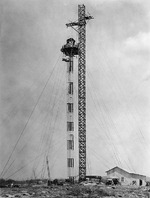 | 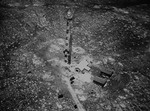 | 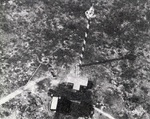 | 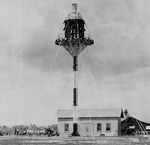 |
Maps
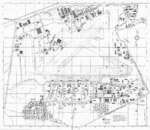 |
Ewa Marine Corps Air Station Timeline
| 3 Feb 1941 | The US Marine Corps established an airfield near the Ewa villages at Kapolei, Honolulu County, US Territory of Hawaii with the aircraft of Marine Aircraft Group 2 originally based at Naval Air Station Ford Island, also on the Hawaiian island of Oahu. |
| 27 May 1941 | Jack Kleiss earned the nickname "Dusty" after making an unauthorized landing at Marine Corps Air Station Ewa on the island of Oahu, US Territory of Hawaii, stirring up a giant cloud of red dust. |
| 27 Aug 1942 | US Marine Corps squadron VMF-214 took delivery of 12 F4F-3 Wildcat fighters while at Marine Corps Air Station Ewa in the US Territory of Hawaii. |
| 4 Oct 1942 | The Headquarters Squadron, Marine Aircraft Wing, Pacific of the United States Marine Corps arrived at Ewa Marine Corps Air Station near Honolulu, US Territory of Hawaii. |
| 18 Jun 1952 | US Marine Corps Air Station Ewa in US Territory of Hawaii was decommissioned; the grounds were absorbed into US Naval Air Station Barbers Point. |
Please consider supporting us on Patreon. Even $1 per month will go a long way! Thank you. Please help us spread the word: Stay updated with WW2DB: |
Visitor Submitted Comments
All visitor submitted comments are opinions of those making the submissions and do not reflect views of WW2DB.
| WW2-Era Place Name | Kapolei, Oahu, Hawaii |
| Lat/Long | 21.3222, -158.0494 |
- » 1,167 biographies
- » 337 events
- » 44,601 timeline entries
- » 1,243 ships
- » 350 aircraft models
- » 207 vehicle models
- » 376 weapon models
- » 123 historical documents
- » 261 facilities
- » 470 book reviews
- » 28,520 photos
- » 367 maps
Fleet Admiral Chester W. Nimitz, 16 Mar 1945
Please consider supporting us on Patreon. Even $1 a month will go a long way. Thank you!
Or, please support us by purchasing some WW2DB merchandise at TeeSpring, Thank you!
11 Oct 2014 07:19:11 AM
Can anyone provide a list of squadrons that served or transited thhough EWA from sept 1939 to Sept 1945, including dates and aircraft?
A link to a site that can provide this information would be appreciated.